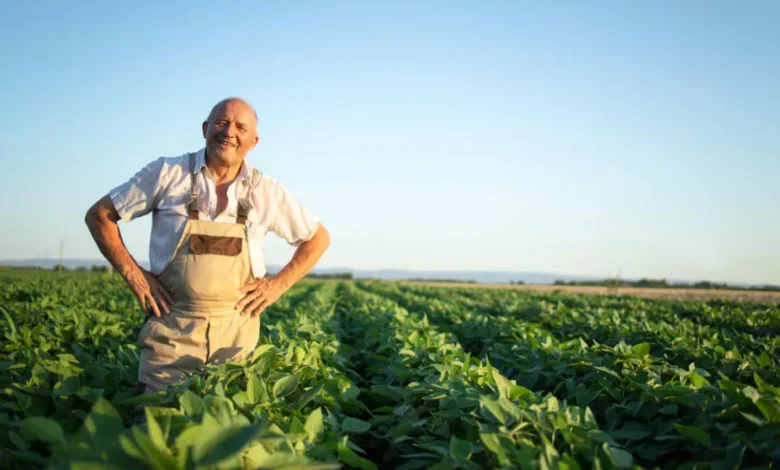A Deep Dive into Low Doc Rural Farming Loans in Australia

Looking to start or expand your rural farming business in Australia but struggling to obtain the necessary financing? Look no further than low doc rural farming loans. These specialized loans offer a streamlined application process for farmers who may not have all the traditional financial documentation typically required by lenders. In this article, we will dive deep into the world of low doc rural farming loans in Australia, exploring their benefits, eligibility criteria, and how they can unlock new opportunities for aspiring farmers.
With minimal paperwork and a simplified application process, low doc loans provide a lifeline for farmers who face challenges when it comes to securing traditional loans. Whether you’re a seasoned farmer looking to expand or a beginner trying to enter the industry, these loans can be the solution you’ve been searching for.
By delving into the specifics of low doc rural loans, we aim to provide you with a comprehensive understanding of this financing option, empowering you to make informed decisions about the future of your farming venture. So, join us as we explore the possibilities and unlock the opportunities that low doc rural farming loans present for Australian farmers.
Understanding the agriculture industry in Australia
Australia is renowned for its vast and diverse agricultural landscape, which plays a crucial role in the nation’s economy. From sprawling wheat fields to lush vineyards, the agriculture industry in Australia is a thriving and dynamic sector that contributes significantly to the country’s GDP.
The agriculture industry in Australia is characterized by its resilience, innovation, and adaptability. Farmers across the country have long been at the forefront of adopting new technologies and implementing sustainable practices to optimize their operations and meet the growing demands of both domestic and international markets.
However, the agriculture industry in Australia is not without its challenges. Factors such as climate change, extreme weather events, market fluctuations, and regulatory changes can create significant obstacles for farmers, making it increasingly difficult to maintain profitability and ensure the long-term viability of their operations. These challenges have highlighted the need for specialized financing solutions that can provide farmers with the support they require to navigate the complexities of the industry.
The challenges faced by farmers in accessing traditional loans
Securing financing for farming operations can be a major hurdle for many Australian farmers. Traditional lending institutions often view the agriculture industry as a high-risk sector, leading to stringent eligibility criteria and a complex application process that can be daunting for farmers.
One of the primary challenges faced by farmers in accessing traditional loans is the requirement for extensive financial documentation. Lenders typically demand a comprehensive financial history, including detailed income statements, balance sheets, and tax returns, which can be particularly challenging for farmers who may not have access to such detailed records or who operate in a cash-based environment.
Additionally, the seasonal nature of farming and the unpredictability of crop yields and livestock production can make it difficult for farmers to demonstrate a stable and consistent income stream, further complicating the loan application process. This can be particularly problematic for new or small-scale farmers who may not have the extensive financial history required by traditional lenders.
What are low doc rural farming loans?
Low doc rural farming loans are a specialized financing option designed to address the unique challenges faced by farmers in Australia. These loans offer a streamlined application process with reduced documentation requirements, making them a more accessible option for farmers who may not meet the strict criteria of traditional lending institutions.
By offering this more flexible and accessible financing option, low doc rural farming loans aim to provide farmers with the capital they need to invest in their operations. These loans can be a lifeline for farmers who may have been previously excluded from traditional lending options due to the complexities of their financial situation.
Typical scenarios include providing funding for working capital, refinance, bridging loans, complex or distressed scenarios, bank exits, growth and expansion opportunities.
Low doc rural loans are short term from 6 months to 2 years with LVR’s to 60% for first mortgage and up to 65% LVR with a Second Mortgage.
Eligibility criteria for low doc rural farming loans
The eligibility criteria for low doc rural farming loans are typically less stringent than those for traditional loans, making them more accessible to a wider range of farmers. However, there are still some key requirements that applicants must meet to be considered for a low doc rural farming loan.
One of the primary eligibility criteria is that the applicant must be engaged in a farming or agricultural-related business. This can include a wide range of activities, such as crop cultivation, livestock production, horticulture, and even value-added processing of agricultural products. Lenders will often require proof of the applicant’s involvement in these activities, such as a business registration or a history of farming income.
Another important eligibility factor is the applicant’s credit history. While low doc rural farming loans may be more lenient than traditional loans, lenders will still conduct a credit check to ensure that the applicant has a reasonable track record of managing their financial obligations. Applicants with a history of defaults or bankruptcy may find it more challenging to be approved for a low doc loan.
Benefits of low doc rural farming loans for farmers
Low doc rural farming loans offer a range of benefits that can be particularly valuable for farmers in Australia. By addressing the unique challenges faced by the agriculture industry, these specialized loans can unlock new opportunities and provide much-needed support for farmers.
One of the primary benefits of low doc rural farming loans is the simplified application process. With reduced documentation requirements, farmers can save time and resources that would otherwise be spent gathering and organizing extensive financial records. This streamlined approach can be especially beneficial for small-scale or new farmers who may not have the same level of financial documentation as their more established counterparts.
Another key advantage of low doc rural farming loans is the increased accessibility they provide. By relaxing some of the traditional lending criteria, these loans open the door for farmers who may have been previously excluded from accessing the capital they need to grow and sustain their operations. This can be particularly valuable for farmers who are just starting out or who are facing financial challenges due to external factors, such as natural disasters or market fluctuations.
Case studies: Success stories of farmers who utilized low doc rural farming loans
To illustrate the real-world impact of low doc rural farming loans, let’s explore a few case studies of farmers who have successfully utilized this financing option to grow and sustain their agricultural operations.
Case Study 1: Expanding a Dairy Farm
John, a third-generation dairy farmer, had been struggling to secure traditional financing to expand his herd and upgrade his milking facilities. Despite having a strong track record in the industry, John’s cash-based accounting made it challenging to meet the strict documentation requirements of traditional lenders.
Fortunately, John discovered low doc rural farming loans and was able to secure the financing he needed to invest in his operation. The simplified application process and reduced paperwork requirements allowed him to focus on his farming business rather than getting bogged down in lengthy loan applications.
With the low doc loan, John was able to purchase additional land, acquire more dairy cows, and install a state-of-the-art milking parlor. This investment not only increased his herd size and milk production but also improved the efficiency and profitability of his dairy farm. John’s success story serves as a testament to the transformative power of low doc rural farming loans in unlocking new opportunities for farmers.
Case Study 2: Diversifying into Organic Horticulture
Sarah, a young farmer with a passion for sustainable agriculture, had been dreaming of transitioning her family’s traditional vegetable farm to an organic horticulture operation. However, the transition required significant upfront investment, and Sarah struggled to secure the necessary financing through traditional channels.
Determined to make her vision a reality, Sarah turned to low doc rural farming loans. The simplified application process and reduced documentation requirements allowed her to focus on the details of her business plan rather than getting bogged down in paperwork.
With the low doc loan, Sarah was able to purchase organic seed stock, invest in specialized equipment, and implement sustainable farming practices. Over time, her farm flourished, and she was able to tap into the growing demand for high-quality organic produce. Sarah’s story demonstrates how low doc rural farming loans can empower farmers to diversify their operations and embrace innovative, sustainable practices.
Conclusion: Unlocking opportunities for rural farmers through low doc loans
In the dynamic and ever-evolving landscape of Australian agriculture, low doc rural farming loans have emerged as a powerful tool for unlocking new opportunities for farmers. By addressing the unique challenges faced by the industry, these specialized loans have opened the door for a wider range of farmers to access the capital they need to invest in their operations, adapt to changing market conditions, and seize new growth prospects.
Through the streamlined application process, reduced documentation requirements, and increased accessibility, low doc rural farming loans have become a lifeline for farmers who may have previously been excluded from traditional lending options. Whether it’s expanding a dairy herd, transitioning to organic production, or diversifying into new agricultural ventures, these loans have the potential to transform the fortunes of farmers across the country.
As the agriculture industry continues to evolve and face new challenges, the importance of innovative financing solutions like low doc rural farming loans will only grow. By empowering farmers with the resources they need to thrive, these loans can play a crucial role in supporting the long-term sustainability and prosperity of the Australian agricultural sector. As we’ve seen through the inspiring case studies, the opportunities unlocked by low doc rural farming loans are truly boundless.




